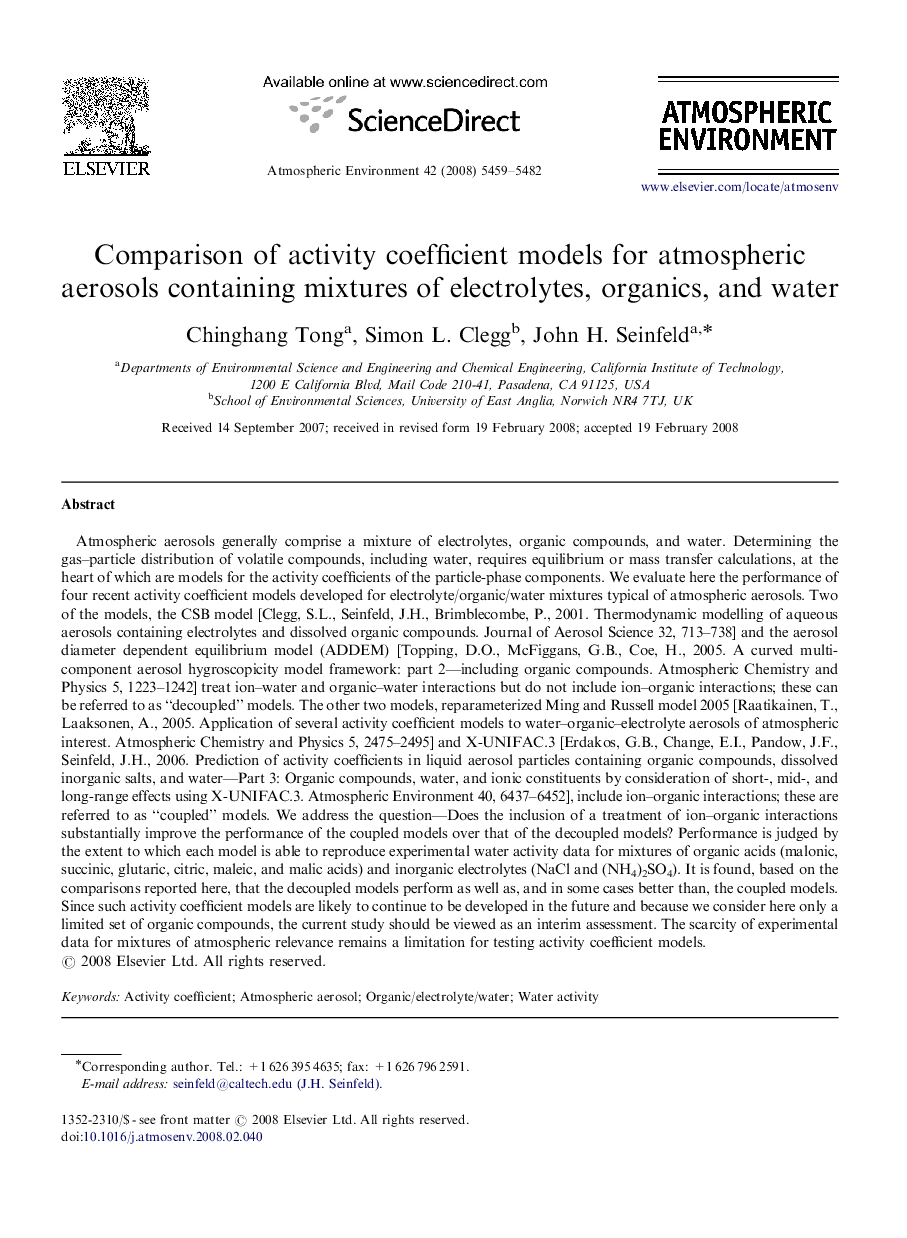| کد مقاله | کد نشریه | سال انتشار | مقاله انگلیسی | نسخه تمام متن |
|---|---|---|---|---|
| 4442747 | 1311164 | 2008 | 24 صفحه PDF | دانلود رایگان |

Atmospheric aerosols generally comprise a mixture of electrolytes, organic compounds, and water. Determining the gas–particle distribution of volatile compounds, including water, requires equilibrium or mass transfer calculations, at the heart of which are models for the activity coefficients of the particle-phase components. We evaluate here the performance of four recent activity coefficient models developed for electrolyte/organic/water mixtures typical of atmospheric aerosols. Two of the models, the CSB model [Clegg, S.L., Seinfeld, J.H., Brimblecombe, P., 2001. Thermodynamic modelling of aqueous aerosols containing electrolytes and dissolved organic compounds. Journal of Aerosol Science 32, 713–738] and the aerosol diameter dependent equilibrium model (ADDEM) [Topping, D.O., McFiggans, G.B., Coe, H., 2005. A curved multi-component aerosol hygroscopicity model framework: part 2—including organic compounds. Atmospheric Chemistry and Physics 5, 1223–1242] treat ion–water and organic–water interactions but do not include ion–organic interactions; these can be referred to as “decoupled” models. The other two models, reparameterized Ming and Russell model 2005 [Raatikainen, T., Laaksonen, A., 2005. Application of several activity coefficient models to water–organic–electrolyte aerosols of atmospheric interest. Atmospheric Chemistry and Physics 5, 2475–2495] and X-UNIFAC.3 [Erdakos, G.B., Change, E.I., Pandow, J.F., Seinfeld, J.H., 2006. Prediction of activity coefficients in liquid aerosol particles containing organic compounds, dissolved inorganic salts, and water—Part 3: Organic compounds, water, and ionic constituents by consideration of short-, mid-, and long-range effects using X-UNIFAC.3. Atmospheric Environment 40, 6437–6452], include ion–organic interactions; these are referred to as “coupled” models. We address the question—Does the inclusion of a treatment of ion–organic interactions substantially improve the performance of the coupled models over that of the decoupled models? Performance is judged by the extent to which each model is able to reproduce experimental water activity data for mixtures of organic acids (malonic, succinic, glutaric, citric, maleic, and malic acids) and inorganic electrolytes (NaCl and (NH4)2SO4). It is found, based on the comparisons reported here, that the decoupled models perform as well as, and in some cases better than, the coupled models. Since such activity coefficient models are likely to continue to be developed in the future and because we consider here only a limited set of organic compounds, the current study should be viewed as an interim assessment. The scarcity of experimental data for mixtures of atmospheric relevance remains a limitation for testing activity coefficient models.
Journal: Atmospheric Environment - Volume 42, Issue 21, July 2008, Pages 5459–5482